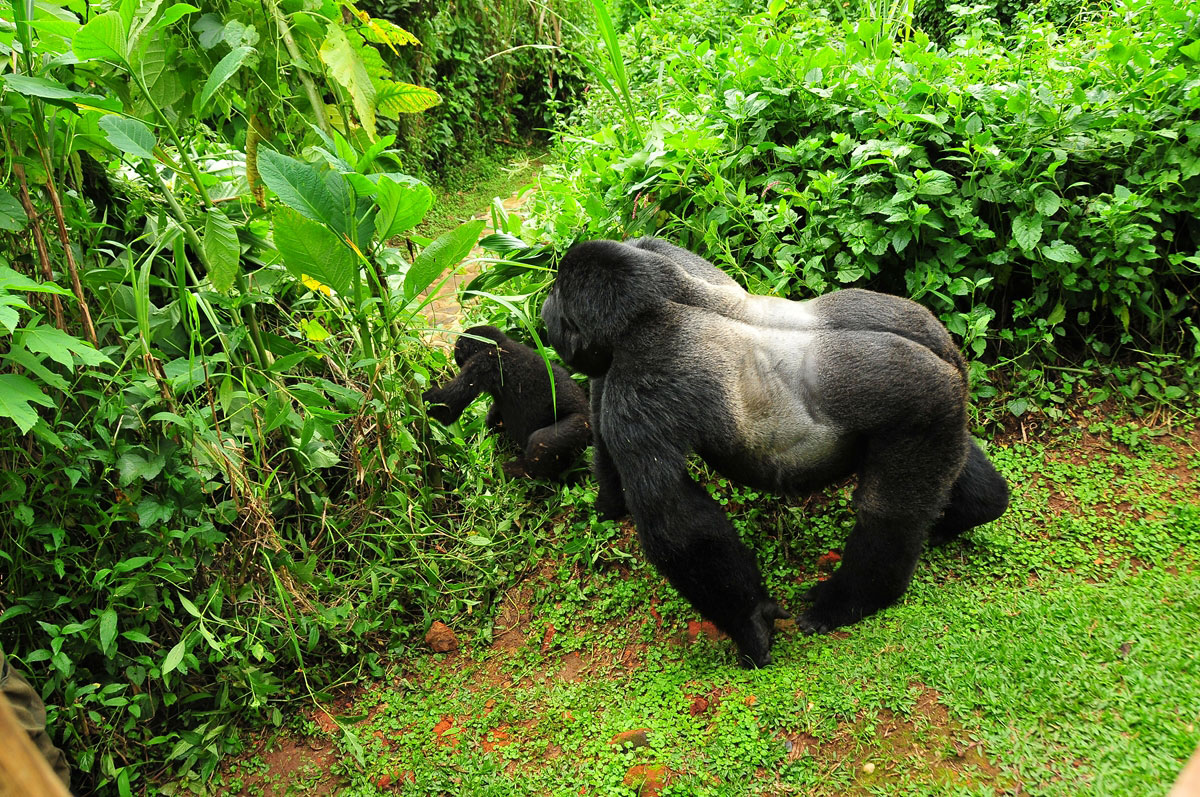What makes mountain gorillas unique? When talks turn to great apes, most people possibly think of the mountain gorillas that the legendary primatologist Dian Fossey made famous. The remarkable work that she did in the Virunga Mountains in Rwanda, as well as her unsolved murder, captured the West’s imagination.
This accounts for a good deal of the mountain gorilla’s popularity as a safari attraction – they are possibly the world’s most photographed apes. But the truth is they are a subspecies of the Eastern gorilla; a much larger and varied gorilla.
While their name mountain gorillas suggest that they simply live on mountains, mountain gorillas actually prefer forested mountains. They are the most threatened race of gorillas that roam the rain forests of western Uganda’s Bwindi Impenetrable National Park and the Virunga Mountains that span the borders of southern Uganda, Rwanda and the Democratic Republic of Congo. They cannot be found anywhere on earth.
As seen during Uganda gorilla safaris, Mountain gorillas reside in the mountainous altitude of 2500 to 4,000 meters. At this altitude, there is much less oxygen and the night temperature is very cold, and even if the day can be cool, the sun is bright and harsh. In such a cold climate, these apes have developed unique adaptations to help them survive. These adaptation features are actually what makes mountain gorillas unique from other gorilla species.
Although all gorillas might appear to look the same at a first glance, it is possible to tell the different subspecies apart. The habits and physical appearance of mountain gorillas differentiate them from other gorilla subspecies.
As you are observing the mountain gorilla physical appearance, you will notice that these bulky intelligent apes have longer and thicker fur than lowland gorillas. The long fur and large mass help to keep them warm in colder temperatures.
Mountain gorillas also have black fur, while lowland gorillas have brownish fur, and mountain gorillas cannot survive in captivity, while lowland gorillas can survive in captivity. Mountain gorillas also have broader chests and longer faces compared to other gorillas species.
if you are to trek gorillas in Uganda in Bwindi Impenetrable National Park & Mgahinga Gorilla National Park, Rwanda in Volcanoes National Park or the Democratic Republic of Congo in Virunga National Park and Kahuzi Biega National Park






